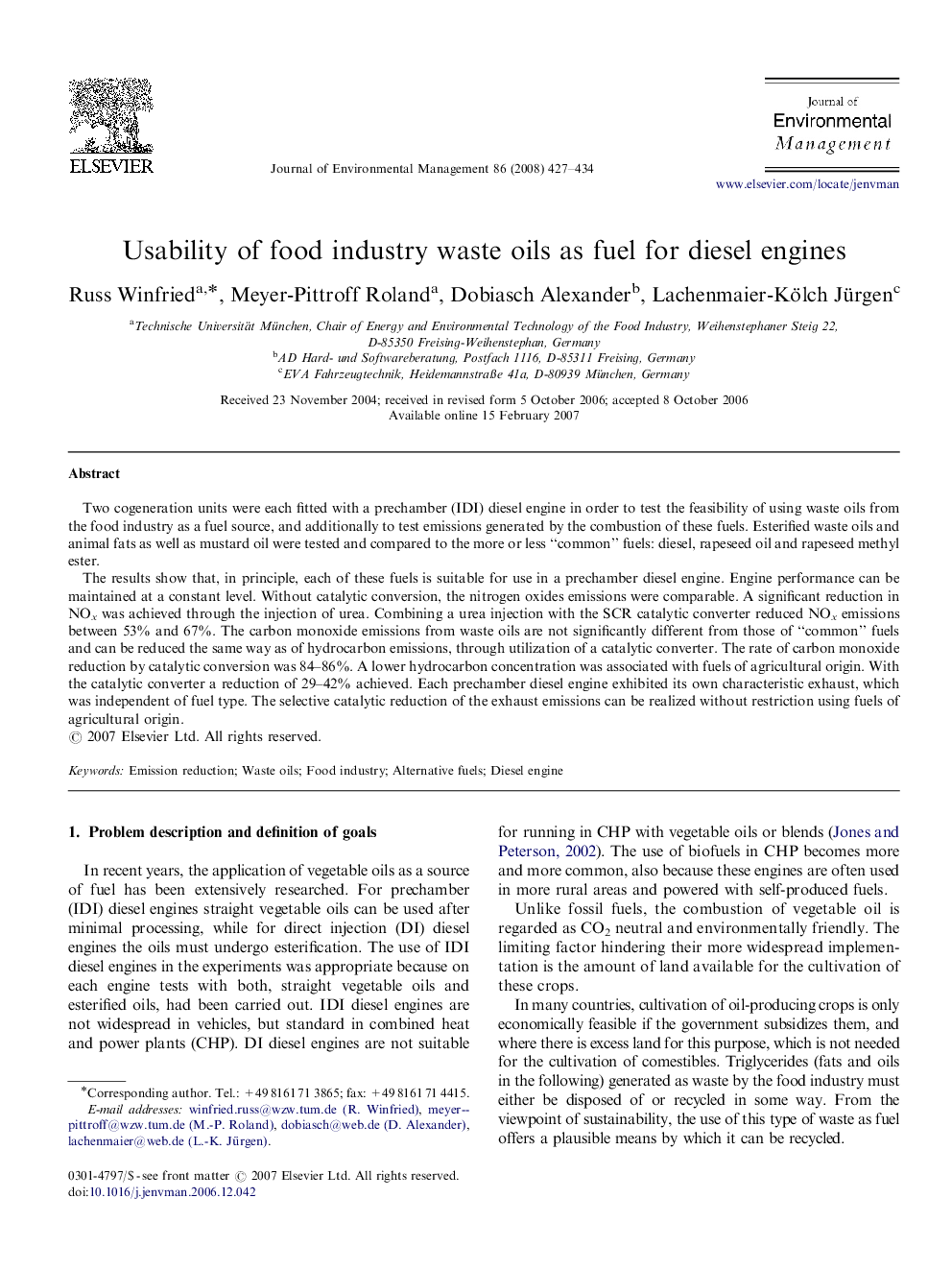| Article ID | Journal | Published Year | Pages | File Type |
|---|---|---|---|---|
| 1058733 | Journal of Environmental Management | 2008 | 8 Pages |
Two cogeneration units were each fitted with a prechamber (IDI) diesel engine in order to test the feasibility of using waste oils from the food industry as a fuel source, and additionally to test emissions generated by the combustion of these fuels. Esterified waste oils and animal fats as well as mustard oil were tested and compared to the more or less “common” fuels: diesel, rapeseed oil and rapeseed methyl ester.The results show that, in principle, each of these fuels is suitable for use in a prechamber diesel engine. Engine performance can be maintained at a constant level. Without catalytic conversion, the nitrogen oxides emissions were comparable. A significant reduction in NOx was achieved through the injection of urea. Combining a urea injection with the SCR catalytic converter reduced NOx emissions between 53% and 67%. The carbon monoxide emissions from waste oils are not significantly different from those of “common” fuels and can be reduced the same way as of hydrocarbon emissions, through utilization of a catalytic converter. The rate of carbon monoxide reduction by catalytic conversion was 84–86%. A lower hydrocarbon concentration was associated with fuels of agricultural origin. With the catalytic converter a reduction of 29–42% achieved. Each prechamber diesel engine exhibited its own characteristic exhaust, which was independent of fuel type. The selective catalytic reduction of the exhaust emissions can be realized without restriction using fuels of agricultural origin.
